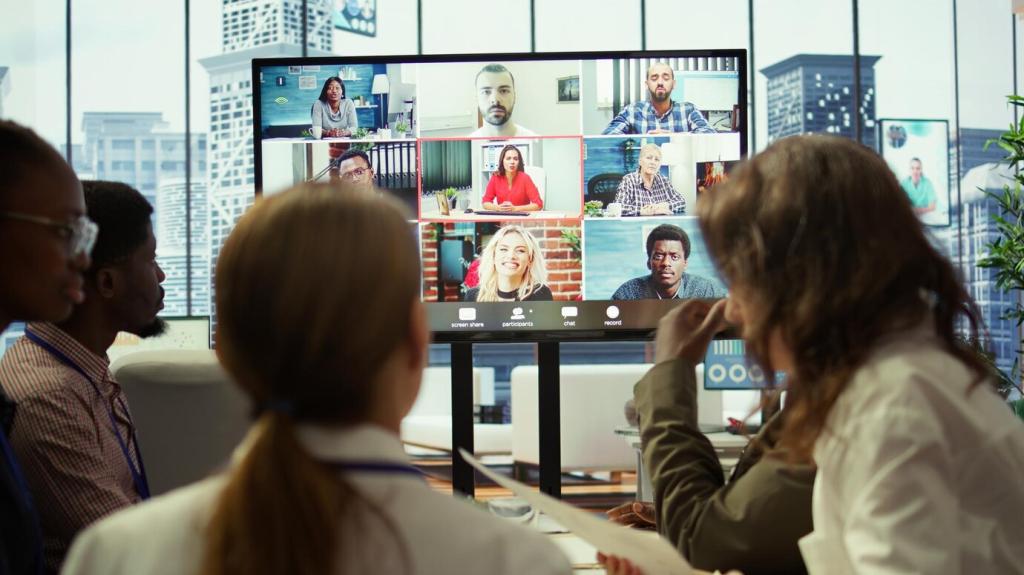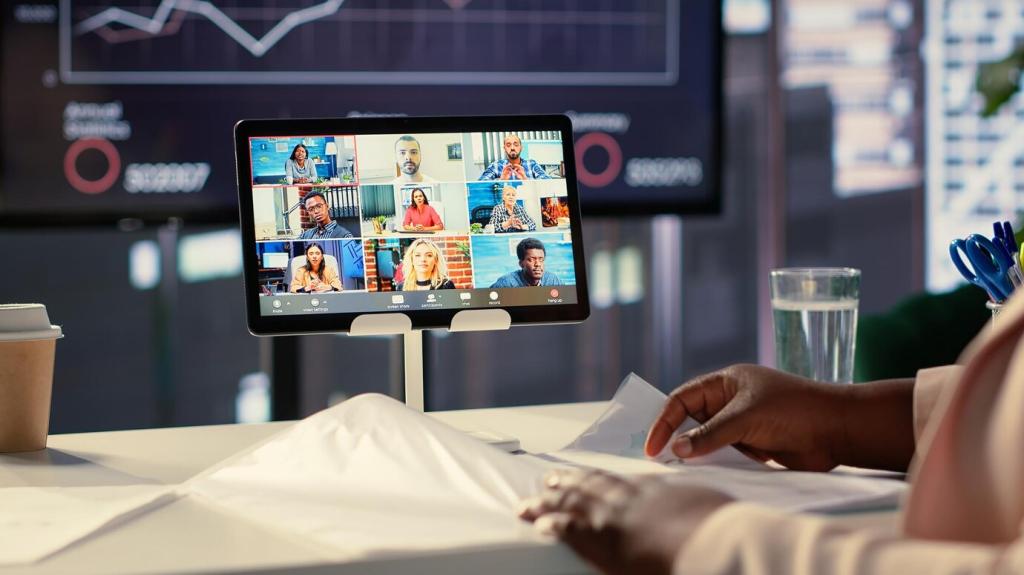
Effective Communication Strategies for Remote Teams
Today’s chosen theme: Effective Communication Strategies for Remote Teams. Welcome to a practical, people-first guide for building clarity, trust, and momentum across time zones without burning out.
Build Clear Communication Rituals
Keep standups laser-focused: outcomes, blockers, and next steps. Rotate facilitators to share ownership. Encourage written updates first to save time, then discuss only what truly needs collaboration. Share your favorite cadence with us in the comments.


Build Clear Communication Rituals
Co-create communication norms: response-time expectations, meeting-free windows, and escalation paths. When norms are visible and revisited, conflicts turn into quick clarifications. Tell us which norm most improved your team’s flow.


Choose Channels with Intention
Default to asynchronous updates for status, specs, and decisions. It respects deep work and time zones. Our Berlin–Manila squad cut meetings by 40% after moving routine check-ins to well-structured threads. What could you shift to async this week?
Choose Channels with Intention
Use real-time calls for sensitive topics, rapid brainstorming, or conflict resolution. Share pre-reads, define outcomes, and appoint a notetaker. If a thread spirals, time-box a quick call to unblock and then document the outcome.

Write to Be Understood, Not Just Heard
Front-load the ask, provide context, then add details. Use headings, bullets, and examples. Keep tone warm and direct to prevent misinterpretation. End with an explicit call to action and deadline so no one wonders what to do next.
Write to Be Understood, Not Just Heard
Create templates for status updates, specs, launch plans, and retros. Checklists catch omissions and speed reviews. Our product squad ships faster thanks to a one-page spec format. Want it? Subscribe and we’ll send a clean, editable version.

Feedback Loops That Inspire Growth
Normalize fast, kind feedback using SBI (Situation–Behavior–Impact). Praise in public, coach in private. A designer once shared how a timely, specific nudge saved a launch. What feedback habit changed your team the most?

Leader Check-Ins and 1:1s
Make 1:1s sacred. Use a shared agenda, review goals, and ask open questions about workload and wellbeing. Leaders set the tone by modeling vulnerability and follow-through. Comment with your favorite 1:1 question.

Celebrate Wins and Human Moments
Create rituals to recognize progress—demo days, shout-out threads, and small surprise notes. Share non-work stories to strengthen bonds. Teams that celebrate together are more resilient during crunch time. Share a recent win we can cheer.
Navigate Time Zones and Cultural Nuance
Overlap Windows and Async Handovers
Map time zones and agree on overlap hours. Use handover notes with context, risks, and next moves. Our follow-the-sun support playbook cut resolution times while protecting sleep. What’s your best handover habit?
Language, Tone, and Idioms
Write simply and avoid slang. Assume positive intent and clarify ambiguous phrases. Emojis help convey warmth but confirm meaning when stakes are high. Invite teammates to flag confusing language without fear of judgment.
Inclusive Planning and Holidays
Centralize regional holidays and plan launches respectfully. Offer flexible attendance and recording-first rituals. Inclusion creates reliability and trust, which in turn accelerates delivery. Subscribe to get our inclusive planning checklist.

